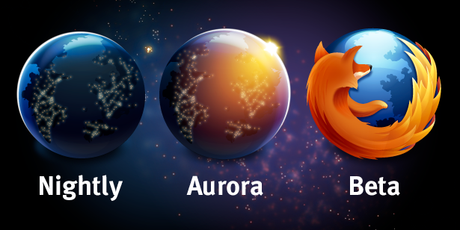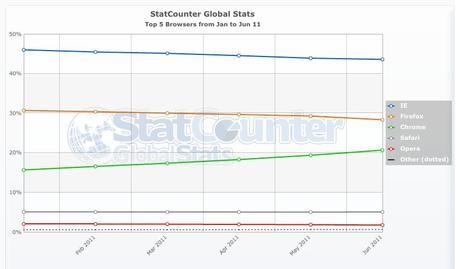With Chrome updating almost every 5-6 weeks, Mozilla recently had announced their ambitious roadmap which ends with the stable release of Firefox 7 by the end 2011. To regulate the releases and follow the roadmap Mozilla introduced Aurora channel aka dev channel.

Previously, Mozilla followed this cycle. Nightly Build > Beta Build > Release Candidate > Final Release. They named some nightly releases as Minefield which were the pre-beta releases and highly unstable giving the impression that the Beta build are much stable which wasn’t the case. To sort out this confusion and regulate the way we see Firefox releases, Mozilla introduced Aurora channel, the pre-Beta but post-nightly release.
So here is the simple breakdown of all the builds,
Nightly > Aurora > Beta > Final
Still confused? After the jump, read along to understand which build is good for you and choose wisely.
Nightly Build : Highly unstable and testing purpose only. Consider these builds as the primal builds of the final product. You won’t get much support or bug fixes/patches/updates for these builds. Use these at your own risk as these might crash alot if you use your firefox with alot of add-ons. The features are not even tested by the Mozilla QA team in these builds.
Aurora Channel : This channel can be dubbed as the developer release of the final product, this is the pre-beta phase, if you like testing and are a firefox enthusiast this might be useful for you. Add-on developers would benefit alot from this build.
Beta : Much stable version of the final release, if you really can’t wait and want to experience the next firefox browser, this should be it. Its not only stable but frequent updates might help you understand how Mozilla has sped up the Firefox development.
And then is the Release cycle which includes the Release Candiate and the Final version.
If you are interested in understanding the Firefox releases do read this blog post ‘Every Six Weeks‘ which practically tells you how and why firefox has sped up the releases and a new version can be expected every 6 weeks now.
I like the way all these are differentiate, even you have different logos for all the builds, this way you are always aware of the version you are using. Whereas in Google Chrome apart from the blue Chrome you are clueless being in the dev channel.
Worldwide Browser Statistics Update 
Chrome just broke the 20% mark.
Firefox has fallen from the stable 30% share to 28.5%
IE still has the maximum market share of 43%.

